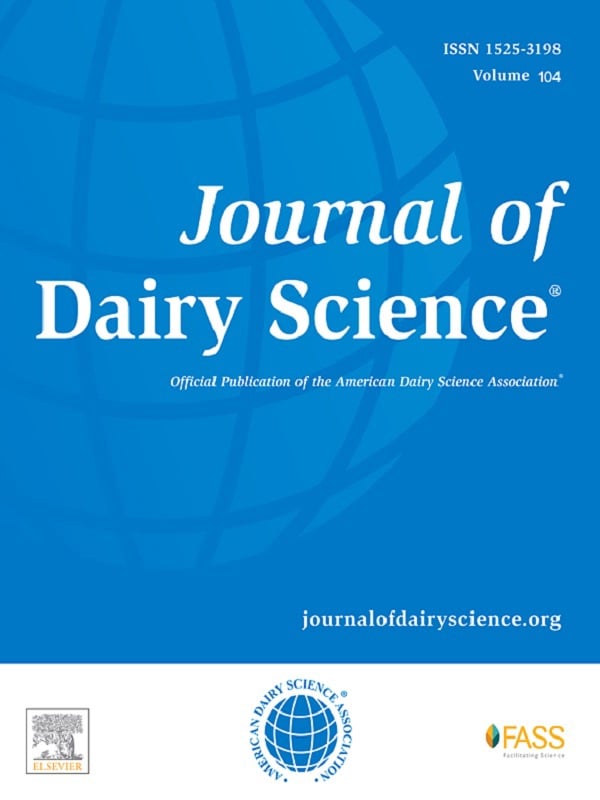Postruminal infusion of calcium gluconate increases milk fat production and alters fecal volatile fatty acid profile in lactating dairy cows
J. Dairy Sci. 102:1274–1280
- Ruminants
- Open Access

Abstract
Gluconic acid is a carboxylic acid naturally occurring in plants and honey. In nonruminant animals, gluconic acid has been shown to increase gastrointestinal butyrate concentrations and improve growth performance, but a ruminant application remains undescribed. This experiment examined the effects of postruminal calcium gluconate (CaG) on milk production, fecal volatile fatty acid concentrations, and plasma metabolite concentrations in lactating dairy cows. Six rumen cannulated multiparous Holstein cows (60 ± 6 d in milk) were randomly assigned to 6 treatment sequences within a 6 × 6 Latin square design in which each experimental period consisted of 5 d of continuous postruminal infusion followed by a 2 d wash-out period. Test treatments included a negative control (CON; 0.90% NaCl wt/vol), positive control (Na-butyrate, 135 g/d), and 4 doses of CaG (44, 93, 140, and 187 g/d). Cows received a total mixed ration (31% corn silage, 28% alfalfa silage, 5% hay, 36% concentrate) with dry matter intake fixed (25.3 ± 1.7 kg/d) throughout the experiment. On d 5 of each infusion period, samples of milk, feces, and blood were collected from each animal. Calcium gluconate treatments increased milk fat concentration, and a tendency was observed for increased milk fat yield and energy-corrected milk yield above levels achieved by CON, with maximal treatment responses of 4.43% (CON 3.81%), 2.089 kg/d (CON 1.760 kg/d), and 51.8 kg/d (CON 47.1 kg/d), respectively. Concentrations of iso-butyric acid in feces were greater in cows infused with CaG (13.3 µmol/g) treatments compared with CON (9.7 µmol/g). Arterial concentrations of glucose and nonesterified fatty acids were lower (glucose: CaG 2.98 mmol/L, CON 3.29 mmol/L and nonesterified fatty acids: CaG 0.130 mmol/L vs. 0.148 mmol/L) and β-hydroxybutyrate higher (CaG 1.703 vs. CON 0.812) in cows infused with CaG than CON. Together, these results suggest that postruminal infusion of CaG may alter metabolic mechanisms to support a milk fat production response.